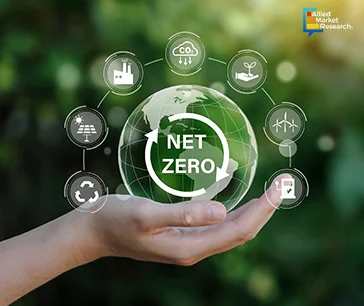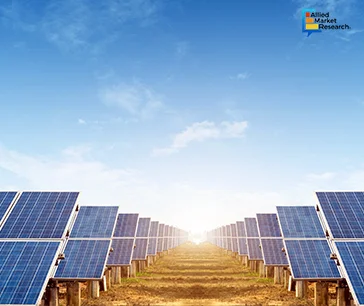Table Of Contents
- The advent of decarbonization-A Step toward net zero emission
- A new era of digitalization for improved efficiency
- Distributed energy sources: A Revolution in solar energy distribution
- Energy as a service model for integration of smart technologies
- Rising demand for energy storage systems due to digitalization

Yerukola Eswara Prasad

Koyel Ghosh
Energy and Power: Analyzing Top 5 Trends Transforming the Outlook of the Sector in Q2 2024

The energy and power sector is undergoing a significant transformation due to decentralization and the emergence of distributed generation sources such as solar PV, battery storage, and wind power. This shift is revolutionizing conventional centralized generation and transmission models, prompting leading power utility companies to prioritize business model adjustments and strategic transformations.
Moreover, the integration of digital technologies and the Internet of Things (IoT) into energy infrastructure has the potential to transform the sector, facilitating improved control, optimization, and predictive maintenance of power generation and distribution systems. Smart grid technologies have improved, promoting more efficient energy distribution, real-time monitoring, and demand-response mechanisms. This could potentially result in decreased energy wastage and optimized grid operations.
Allied Market Research provides both quantitative and qualitative analysis of the key trends changing outlook of the energy and power domain for Q2 2024. This trend analysis drives long-term growth strategies and helps in making informed investment decisions. Furthermore, it assists stakeholders to upgrade their product and service offerings.
The advent of decarbonization-A Step toward net zero emission
Decarbonization assists manufacturers in meeting diverse environmental regulations by driving the adoption of advanced technologies and achieving higher efficiency. Increasing environmental concerns are driving the need for decarbonization across various end-use sectors. This includes transitioning from fossil fuels toward cleaner alternatives such as renewable energy sources (solar, wind, hydro, and nuclear power), and implementing energy efficiency measures such as hydrogen power cells, electric vehicles, and so on. The objective is to address climate change by decreasing greenhouse gas emissions and cultivating a more sustainable energy system.

A new era of digitalization for improved efficiency
Digital transformation in the energy and power sector is driven by the growing need for more efficient, reliable, and sustainable energy systems. Digitalization extends the lifespan of power assets by improving maintenance and reducing physical stresses on equipment. This saves costs and investments in new infrastructure. Also, digitalization enables the rise of novel business models like energy-as-a-service and virtual power plant services for distributed energy resources. These models create fresh opportunities and revenue streams while also improving system efficiency. The IoT in energy and sensor technologies enable real-time monitoring and remote controlling of energy infrastructure, including power distribution networks, plants, and substations. Digital technologies are vital in grid modernization initiatives, comprising grid automation, voltage optimization, and demand response programs. These efforts enhance grid flexibility, reliability, and resilience, all while facilitating the transition to a more sustainable energy future.
Distributed energy sources: A Revolution in solar energy distribution
The increasing capacity of distributed energy generation in the residential sector has significantly enhanced electricity availability. Distributed Energy Resources (DERs) improve grid flexibility, resilience, and sustainability. Moreover, electricity generated from distributed energy sources is directly supplied to a facility or community. Any excess electricity produced beyond local demand is then integrated into the main power grid. Distributed energy sources also empower communities and individuals to shift toward a decentralized and renewable energy future. A Virtual Power Plant (VPP) is an advanced decentralized power system comprised of various distributed energy sources such as wind turbines, hydroelectric plants, and solar PV cells. Its primary goal is to integrate these diverse energy sources.

Energy as a service model for integration of smart technologies
The Energy as a Service (EaaS) model signifies a shift from the conventional energy procurement model toward a collaborative approach, empowering businesses and organizations to enhance their management of energy usage, costs, and environmental impact. These solutions are regularly updated to incorporate innovative approaches across various sectors. This model also improves accessibility to advanced energy technologies by minimizing upfront costs and risks for customers. The transition to the Energy as a Service model is driven by four prominent trends: decarbonization, electrification, urbanization, and digitalization. This model promotes the integration of smart technologies and encourages the adoption of advanced, low-carbon technologies.
Rising demand for energy storage systems due to digitalization
The integration of digitalization and AI across multiple end-use sectors is driving a rapid increase in the demand for energy storage systems. Energy storage systems have the capacity to retain excess energy generated during peak production hours, which can be utilized during periods of low energy generation. Nowadays, the energy storage sector is witnessing swift innovation due to advancements in battery chemistries, thermal energy storage, and various other technologies. These advancements are significantly enhancing the efficiency, cost-effectiveness, and accessibility of energy storage solutions.

To conclude, prominent trends in the energy and power sector including digitalization, decarbonization, and distributed energy sources are changing the industrial landscape. Moreover, energy as a service model and rising demand for energy storage systems are projected to offer remunerative growth opportunities for the domain in the upcoming years.
Feel free to reach out to us for further guidance and suggestions on how businesses can solidify their leadership in the sector.

